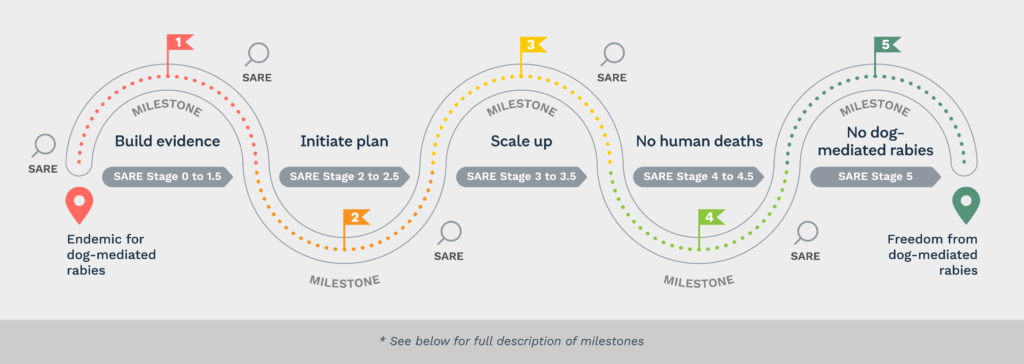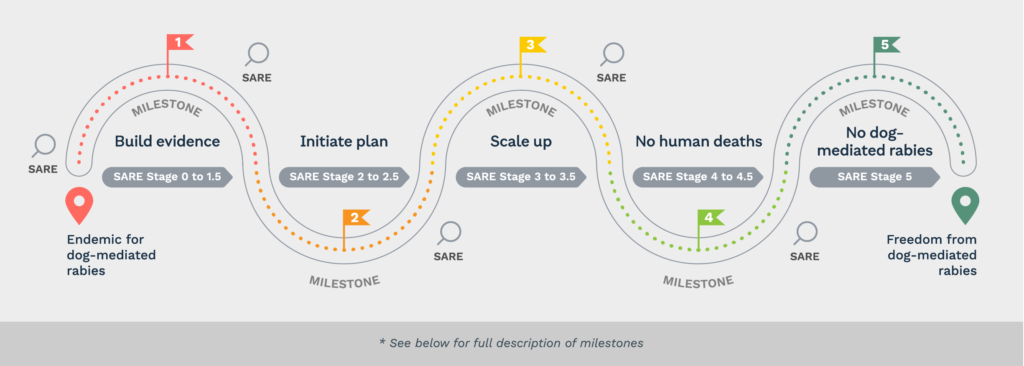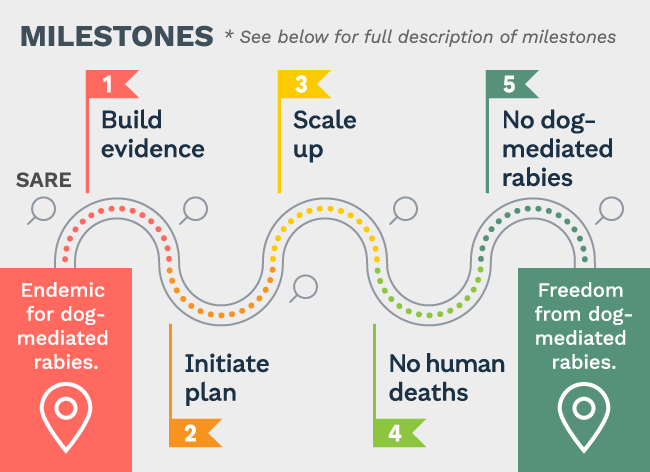The Rabies Roadmap is a flexible wayfinder to assist anyone involved in planning and implementing rabies control strategies.
The Roadmap provides support and guidance for countries at all stages of the journey to rabies-free status. Throughout the Roadmap, users will find links to useful tools and resources to help develop and implement a successful rabies control strategy.
For those countries that already have rabies controls in place, the Roadmap can be used to measure progress, plan next steps, estimate resources needed and scale rabies control efforts.
For countries at the start of the journey, the Rabies Roadmap provides valuable insights and guidance, as well as links to tools and resources to help plan, estimate costs and implement successful rabies control strategies.
Wherever you are in the journey, we all share one destination: zero human deaths from dog-mediated rabies by 2030.
Roadmap Milestones

SARE
Assessment
SARE is a key element of the Rabies Roadmap and is recommended as starting point to help countries assess their current rabies status and measure progress in relation to current rabies control efforts. See full description below.
SARE Assessments should be taken regularly throughout the roadmap journey to assess progress and refine the workplan.
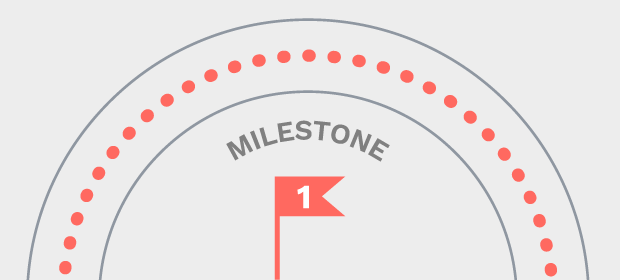
Milestone 1
Build evidence
Dog-mediated rabies is endemic. The country is in the process of building an evidence-base in support of the development and implementation of rabies elimination initiatives at the national-level.
SARE Stage 0 to 1.5
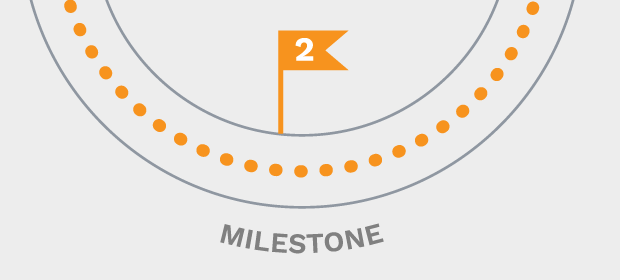
Milestone 2
Initiate plan
Dog-mediated rabies is endemic. The country has built a strong case in support of rabies elimination and is in the process of initiating rabies elimination initiatives at the national-level.
SARE Stage 2 to 2.5
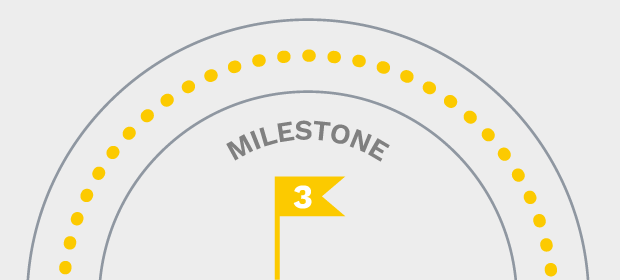
Milestone 3
Scale up
Rabies elimination initiatives are implemented at the national-level, resulting in a notable decline in rabies cases in both animals and humans.
SARE Stage 3 to 3.5 / WOAH Endorsement of Official Control Programme

Milestone 4
No human deaths
There are no more cases of dog-mediated human rabies – and a limited number of canine rabies cases – detected in the country as a result of dog vaccination and human post-exposure prophylaxis that is widely available.
SARE Stage 4 to 4.5 / WHO Validation of zero human deaths from rabies
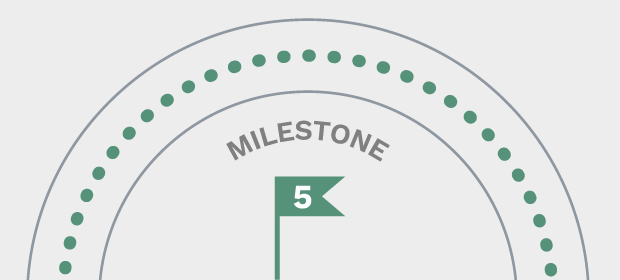
Milestone 5
No dog-mediated rabies
Reliable, comprehensive surveillance data indicates that dog-mediated rabies has been eliminated from the country, and measures have been put in place to maintain freedom.
SARE Stage 5 / Self-declaration of rabies freedom to WOAH
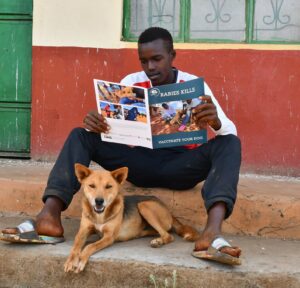
National Strategic Plan Library
The United Against Rabies Forum collates and shares publicly available national strategic plans to support global coordination and alignment with ‘Zero by 30’.
Stepwise Approach to Rabies Elimination (SARE)
A SARE Assessment is a facilitated workshop that enables countries to check their progress against 5 global milestones by evaluating seven key focus areas of their rabies control programs.
The SARE process ensures that countries align their rabies control programs with the internationally agreed Global Strategic Plan, Zero by 30. The assessment can also be carried out at sub-national level, for example by a state in a federal system, or to align regional efforts.
How a SARE Assessment can help:
1. Develop or revise national strategy, identifying strengths and weaknesses in any national rabies elimination program, whether it is just starting or well-established.
2. Develop a medium-term work plan, automatically generating a country-specific plan that can be used immediately to progress national rabies elimination efforts and integrate new or existing partners.
3. Demonstrate progress through regular SARE assessments, enabling countries to demonstrate tangible progress in rabies elimination, aligned with global standards.
4. Develop a regional strategy by standardising rabies elimination programmes, ensuring that they are robust and aligned with the Global Strategic Plan. It is then possible to identify common areas of interest between countries and develop a regional plan.
5. Highlight accomplishments over time, enabling countries to advocate for further support from domestic and external sources.
Use the SARE to determine your specific Roadmap milestone and to measure progress towards self-declaring a rabies-free status.
Case Studies
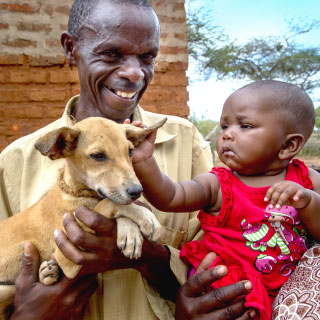
Who we are
The United Against Rabies Forum is an inclusive network committed to working together to end dog-mediated rabies.

Join us
Rabies is a disease we can beat – if we work together! Will you join us?
